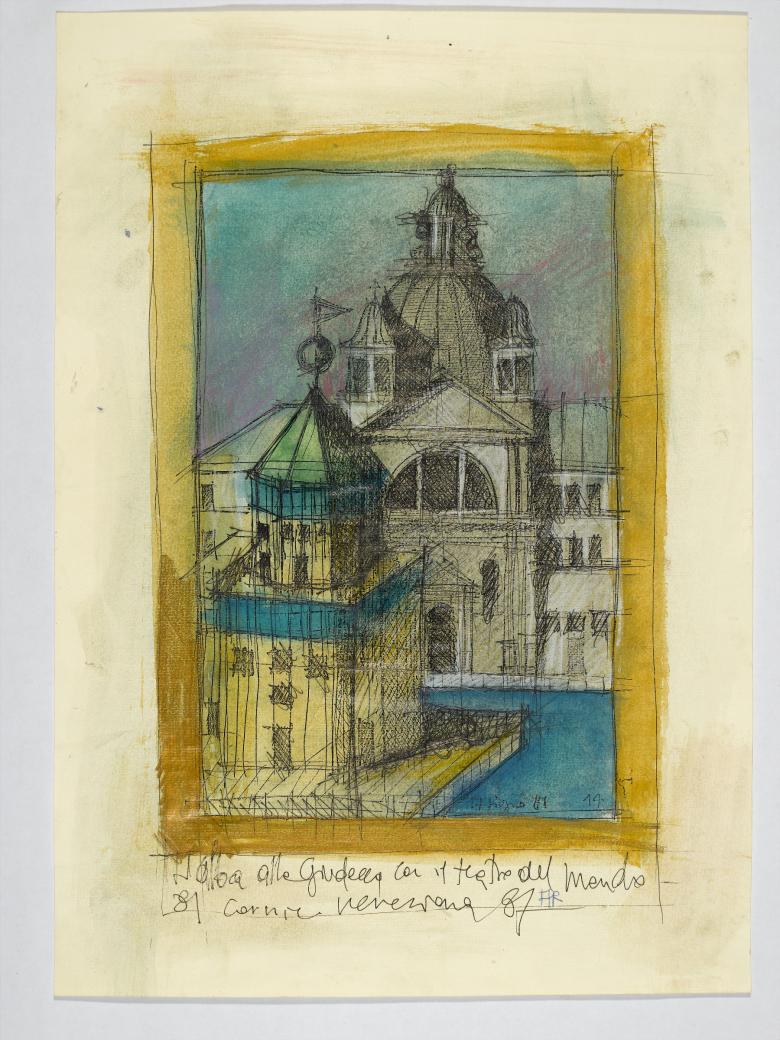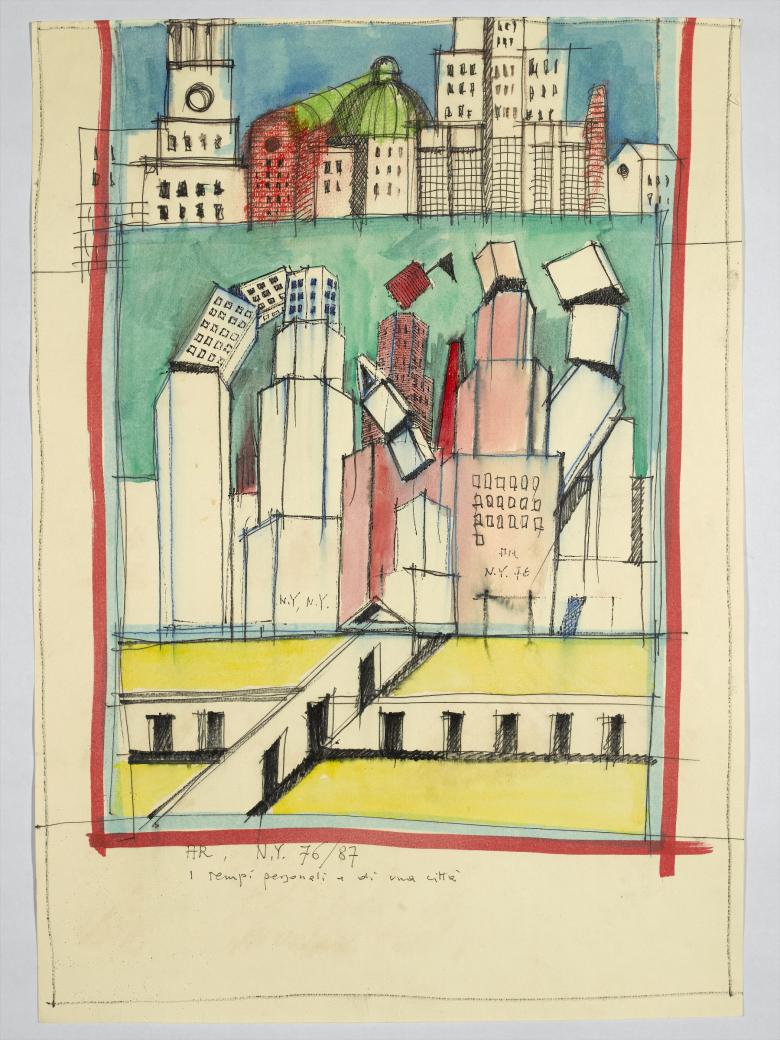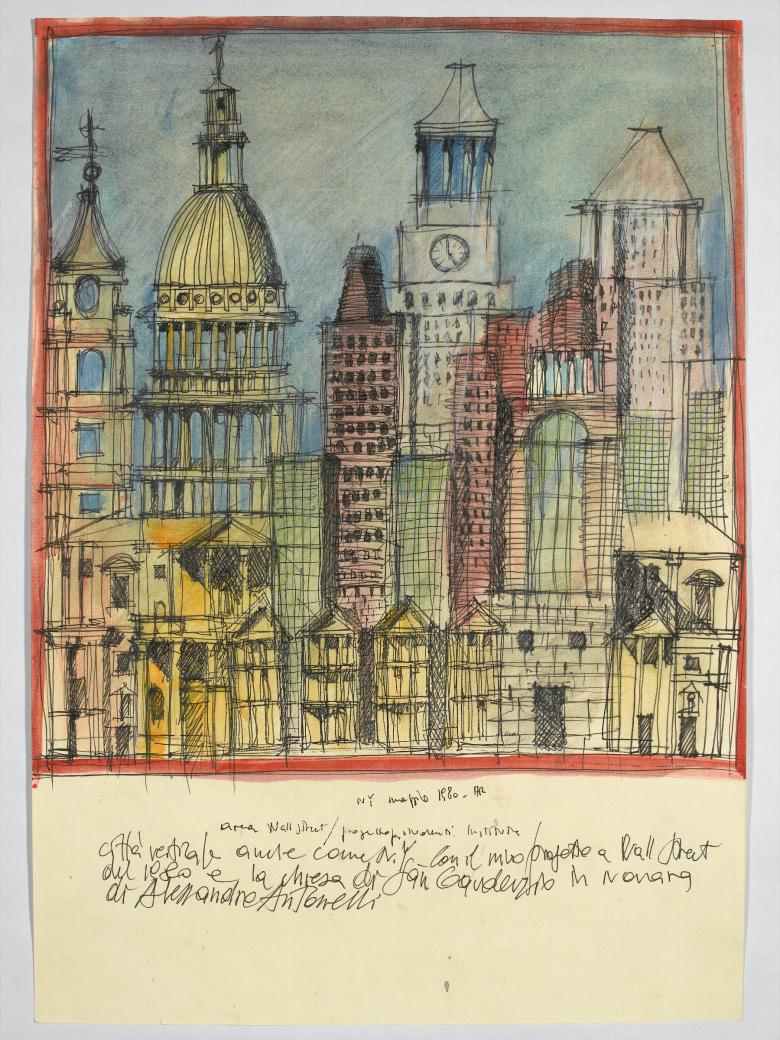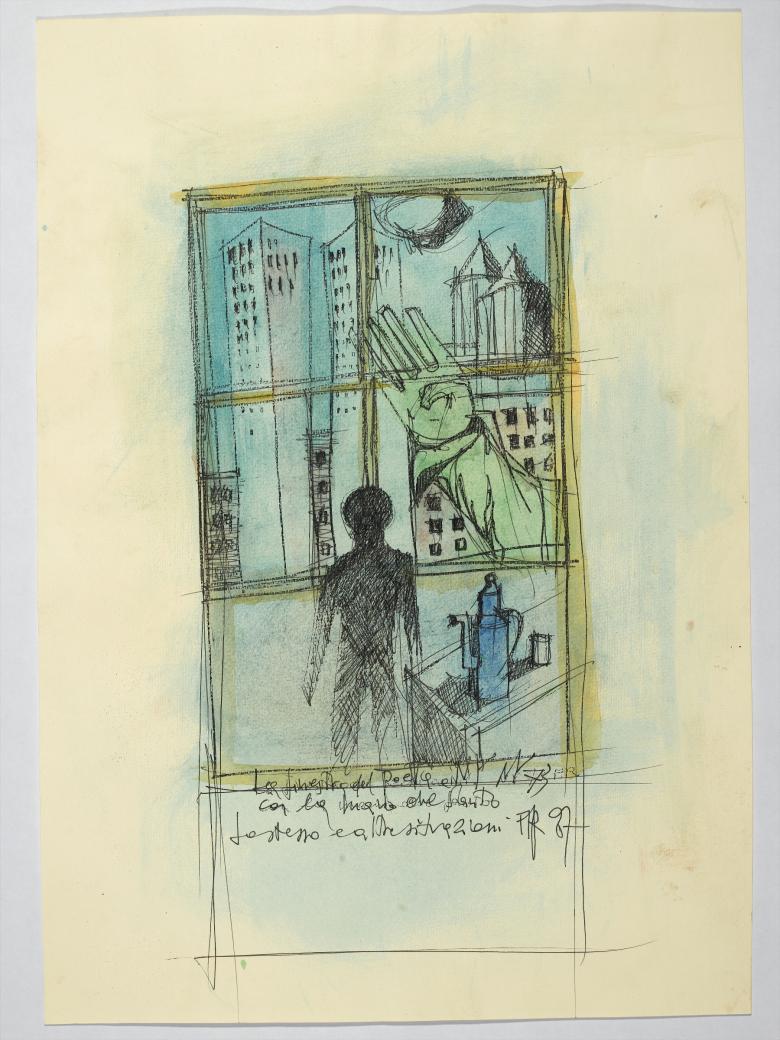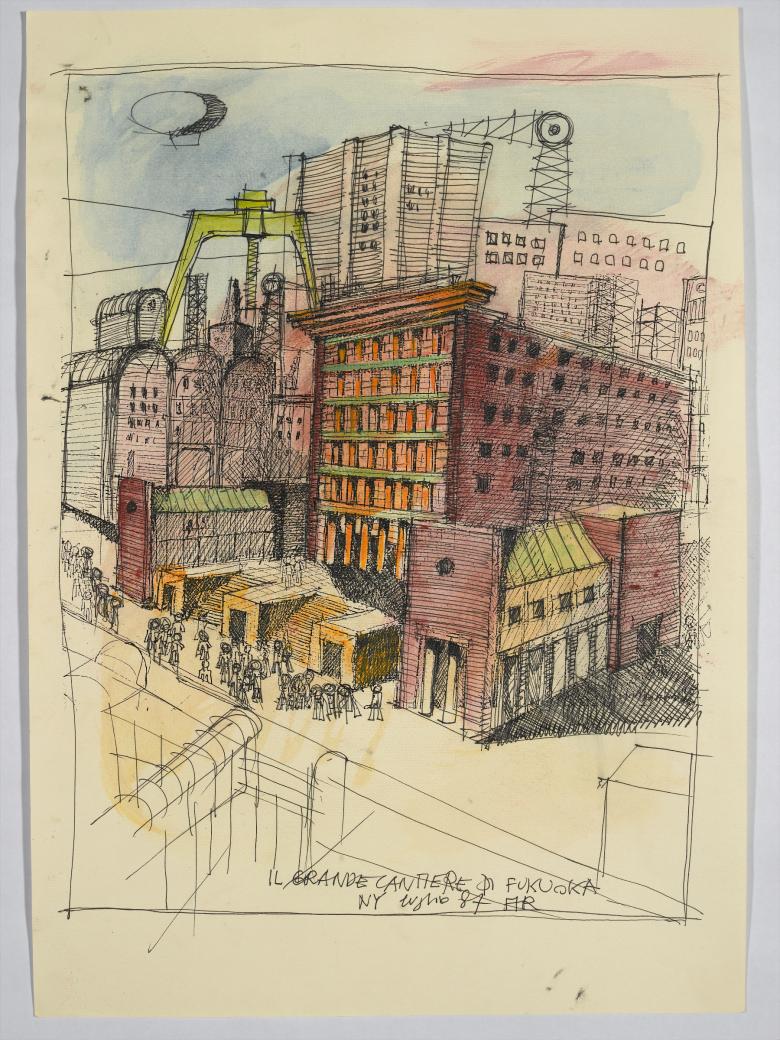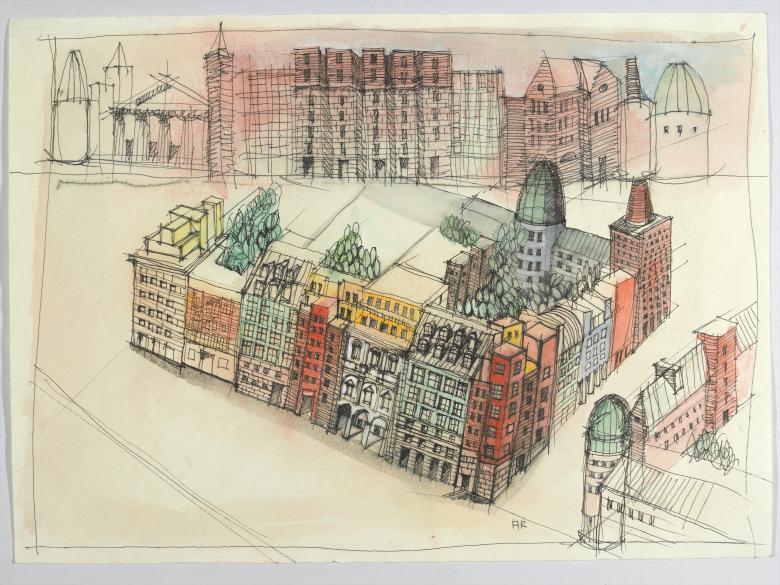'Aldo Rossi: Insulae' at the Museum for Architectural Drawing
Imaginary Cities
Aldo Rossi: Insulae, a new exhibition at the Tchoban Foundation – Museum for Architectural Drawing in Berlin, focuses on Italian architect Aldo Rossi’s drawings from the 1980s. Ulf Meyer visited and sent us his impressions.
The term “insulae” can describe an island as well as an urban block in a Roman city. The Latin word is the title for a high-profile exhibition on the mastermind of Italian postmodernism, Aldo Rossi (1931–1997), who was Italy’s most famous and influential architect in the 1970s and 80s — influential as an architect but also as a designer, author, and prolific intellectual, as far back as the publication of his first book, L'architettura della città, in 1966.
The Tchoban Foundation’s Museum for Architectural Drawing is presenting over 100 of Rossi’s characteristically beautiful drawings, many of them being shown in public for the first time. The show is structured into three sections, or “insulae”: “Corpus Mediolanensis,” “Insula,” and a section about Rossi’s “Works for Berlin,” one of the cities where he was most active. Rossi’s signature style is omnipresent in his drawings as much as in his built oeuvre. He combined a repertoire of geometric shapes, such as cones and triangular gables, with bright, child-like colors; he was open to influences from neoclassicism and the Renaissance as well as historic and poetic analogies.
The “Corpus Mediolanensis” section consists of colored and redrawn single-edition prints that are exhibited alongside other drawings from Rossi’s collection. It is a great self-reflection of the architect, who took photocopies of his own earlier drawings and painted over them again. The colorful prints were made in 1986 and 87 and give an excellent overview of thirty fruitful years of Rossi’s designs.
Rossi used timeless forms at divergent scales: From urban planning to the design of tableware for Alessi, typological similarities were found across the spectrum. Everyday objects followed the same design principles as architectural and urban forms. Rossi designed buildings like objects, and objects like buildings.
From his early Gallaratese apartment block in Milan, with its arcade as an urban archetype, to the red cube of the columbarium of the San Cataldo Cemetery in Modena in 1971, Rossi developed an understanding of cities as archaic typologies of buildings that signified shared values of society built over time — a “collective memory.”
The “Insula” section features drawings influenced by antiquity and their reinterpretation by artists like Piranesi. In contrast to the spirit of the 1970s, Rossi often found inspiration in earlier centuries. Rossi created wonderful “urban capriccio,” the term that Chiara Spangaro from Fondazione Aldo Rossi calls the literally fantastic visions of utopian cities full of architecture. For Spangaro, who curated the exhibition with Nadejda Bartels from the Tchoban Foundation, the drawings create a “visual autobiography” of Rossi.
Early in his career Rossi served as editor of Casabella magazine and professor at Milan Polytechnic, but it was his postmodern theory and distinctive building designs that eventually changed the course of architecture. His drawings and designs became global stylistic icons in the eighties, when he flourished outside of Italy, especially in Japan, the United States, and Germany.
Berlin played an important part in Rossi’s career. A few of the handful of projects he designed for the German capital — including the Schützenstraße-Quarter, the IBA block, and the Stadtvilla on Rauchstraße — were realized, while others, such as the project for the German Historical Museum, remained on paper. In Berlin his block of flats near Checkpoint Charlie were designed in bright red, white and green — Italy’s national colors. Rossi used the same palette after the fall of the wall, when he got to design a whole city block just east of the defunct checkpoint. However, his designs for the Leipziger Platz and a giant commercial center along Landsberger Allee remained on paper.
The exhibition is shown in collaboration with Milan’s Fondazione Aldo Rossi, which was founded in 2005 by Vera and Fausto Rossi, the children of Aldo Rossi, and is directed by Chiara Spangaro. The displays are beautifully simple: drawings in wooden frames on brightly painted walls in ochre and turquoise. The exhibition design lets the drawings speak clearly.

